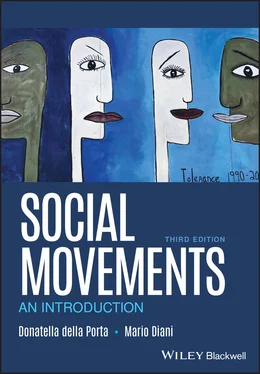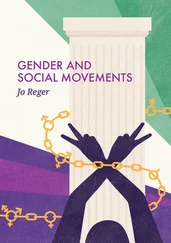According to the scholars of the so‐called world system approach, it was the task of antisystemic movements to resist against greedy capitalism, opposing the logic of the system. As Immanuel Wallerstein noted, ‘to be antisystemic is to argue that neither liberty nor equality is possible under the existing system and that both are possible only in a transformed world’ (Wallerstein 1990, p. 36). The concept of antisystemic movements builds on an analytic perspective about ‘the world‐system of historical capitalism’ that gave rise to them, as ‘class and status consciousness were the two key concepts that justified these movements’ (Arrighi, Hopkins and Wallerstein 1989, p. 1). Research often noted the diminishing structural power of workers, but this is not true in newly industrialized countries as labor unrest emerges as endemic to capitalism as it wants to commodify labor. As Silver and Karatasli (2015, p. 137) remarked, “from both Marxian and Polanyian perspectives, labor unrest should be expected anytime and anywhere we find the commodification of labor: sometimes at the point of production, sometimes in political struggles over regulation of the labor market, sometimes in the form of open resistance, but at other times.” In fact, two types of workers’ struggles have been described: a Marx‐type labor unrest by newly emerging working classes; and a Polanyi‐type labor unrest, with established working classes defending their ways of life and livelihood, which are under attack (Silver 2003). These have been described also as struggles against accumulation in production versus struggles against accumulation by dispossession. Besides those on the working places, struggles also address the background conditions, that capitalist production presupposes (Fraser 2014). Integration in a world economy does not mean equal conditions – or even convergence in all countries – but rather, the division of the world into hegemonic power and dependent economy (Wallerstein 1990). Additionally, capitalism is far from stable: crises of different types (inflation and stagnation, production and distribution) emerge frequently, changing the conditions for political participation as anti‐systemic movement produce adaptation in capitalism (Arrighi, Hopkins, and Wallerstein 1989).
Building on Polanyi, Burawoy singled out a sequence of three successive counter‐movements: respectively, for labor rights, social rights, and human rights. While the wave of anti‐austerity protests that developed between 2010 and 2014 were all reacting to a sense of political dispossession face to a separation between popular politics and power, among their characteristics was, however, a focus on domestic conditions, even if within a global consciousness. As he noted, “If these movements were globally connected, it was their national framing that drove their distinctive momentum. They may share underlying economic causes but their expression is shaped by the terms and structure of national politics” (2015, p. 16). The analysis of the relations between movements reacting to commodification or recommodification and movements reacting to ex‐commodification introduces important considerations about some organizational and identity challenges for nowadays protests as a need to go global enters however in tension with the weakening of previous structures of mobilization, linked to conceptions of social protection, that each neoliberal waves brings about.
In a similar vein, David Harvey (2003) pointed instead at the capitalist logic of development and crisis, singling out different forms of accumulation, as respectively oriented to production and to dispossession – the latter reminding of the original accumulation of capital on its need to expand through special relations with noncapitalist social formations. The periodic return to accumulation by dispossession points at “the continuous role and persistence of the predatory practices of 'primitive' or 'original' accumulation within the long historical geography of capital accumulation” (Harvey 2003, p. 144). While the former is based on the exploitation of wage labor and conditions defining the social wage, the latter include the resistance to the most classic forms of primitive accumulation (especially the expulsion of peasant populations from their land, Sassen 2014), but also the withdrawal of the state from its social obligations, the destruction of culture and nature; the effects of financialization (Harvey 2005, p. 203). Accumulation by dispossession and its discontents are linked indeed to the cyclical emergence of profit making through financial speculation as an alternative to profit making through production in order to address the problems of overaccumulation. In fact, access to cheap input (in terms of land, labor and raw materials) is considered as relevant, as the widening of markets, in creating profits (Harvey 2003, p. 145). To these, Harvey adds the predation related to the credit system and financial capital, as through accumulation by dispossession, various assets are released at very low cost (Harvey 2003, p. 149).
The very logic of accumulation is expected to affect the forms of collective mobilization. As different forms of accumulation coexist – in different mix in different countries – this introduces internal tension within social movements, both progressive and otherwise. Recent movements have so appeared bifurcated between mobilizations around expanded reproduction, and mobilization around accumulation by dispossession. Different from the primitive accumulation, accumulation by dispossession brings about a withdrawal of previous achievements with a (still unfulfilled) need to search for new organizational model. As neoliberalism attacked “all forms of social solidarity that put restraints on capital accumulation” (Harvey 2005, p. 75), the forms that the social movements on the left took in the years 1945–1973, with expanded reproduction in the ascendant, emerged as inappropriate to contrast accumulation by dispossession (Harvey 2005, p. 172).
In sum,
Accumulation by dispossession entails a very different set of practices from accumulation through the expansion of wage labor in industry and agriculture. The latter, which dominated processes of capital accumulation in the 1950s and 1960s, gave rise to an oppositional culture (such as that embedded in trade unions and working‐class political parties) that produced embedded liberalism. Dispossession, on the other hand, is fragmented and particular – a privatization here, an environmental degradation there, a financial crisis of indebtedness somewhere else. It is hard to oppose all of this specificity and particularity without appeal to universal principles. Dispossession entails the loss of rights. Hence the turn to a universalistic rhetoric of human rights, dignity, sustainable ecological practices, environmental rights, and the like, as the basis for a unified oppositional politics.
(Harvey 2005, p. 179)
2.4.4 Movements of the Crisis?
When looking at anti‐austerity protests we should consider that they developed in a situation of crisis that took different characteristics at national (and also subnational) level. The Global Justice Movement and the anti‐austerity protests were both addressing neoliberal capitalism but in different moments. Research on the labor movement has often looked at waves of strikes, singling out that picks of protest are usually recorded in times of full employment when the workers are structurally stronger. Moreover, economic growth also implies higher margins for investing profits in increase in salaries and taxes to support welfare expenses. By contrast, in times of economic crisis, unemployment hinders the capacity for struggling for improved salaries and working conditions as well as the resources available for state interventions. Strikes are therefore expected to decline and, when called for, they are more likely to be defensive than proactive (Franzosi 2004).
Читать дальше












